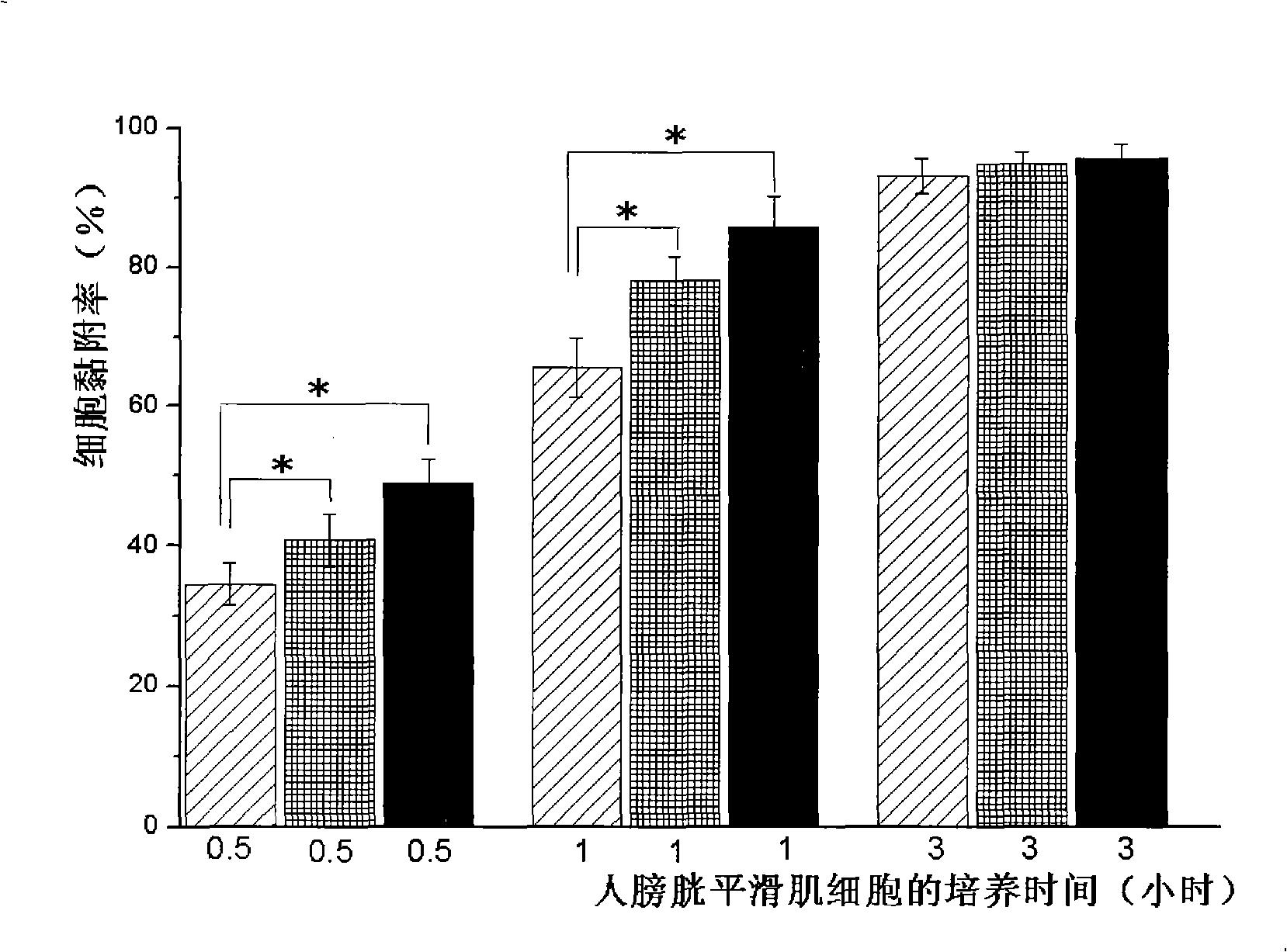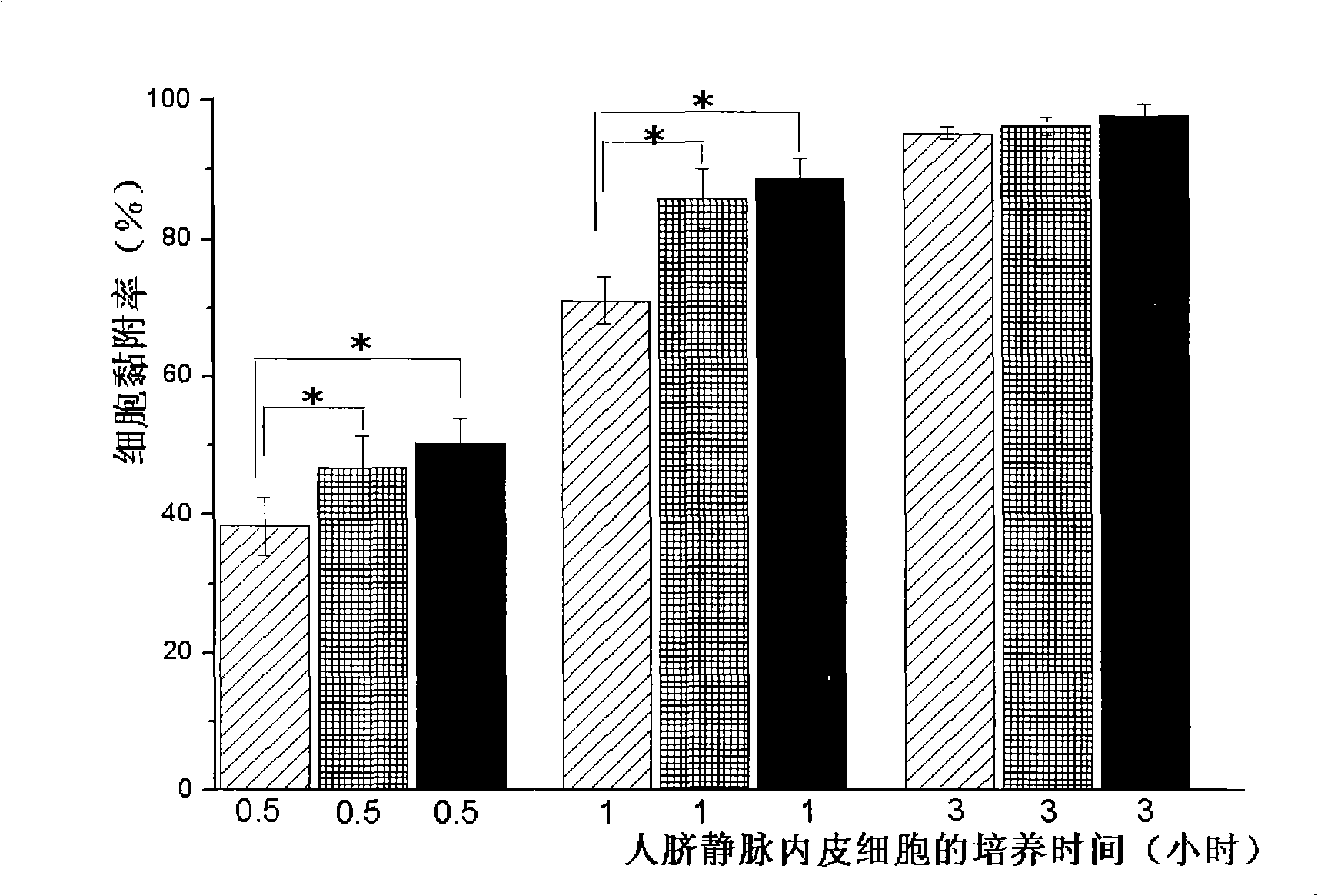Method for detecting bioactivity factor reserved in acellular matrix
A technology of biologically active factors and cell-free matrix, which is applied in the direction of biochemical equipment and methods, microbial measurement/inspection, etc., can solve the problems of unclear adhesion factors and chemokines, single detection of growth factors, etc. The effect of prolonging the inactivation time
- Summary
- Abstract
- Description
- Claims
- Application Information
AI Technical Summary
Problems solved by technology
Method used
Image
Examples
Embodiment 1
[0074] Example 1 The preparation of porcine bladder cell-free matrix, the preparation steps are as follows:
[0075] a) Acquisition of pig bladder: Take out all the bladder and part of the urethra of a pig weighing 20 kg, put them in 4°C pre-cooled 10mM phosphate buffer solution, pH 7.2-7.4, quickly bring them to the laboratory and carefully remove them Except for fat and serosal tissue on the surface, insert an infusion thong catheter through the urethra and fix it on the urethra with silk thread, and then flush the bladder with 4°C pre-cooled 10mM phosphate buffer, pH 7.2-7.4, through the infusion thong catheter 3 times to wash out the urine in the bladder cavity;
[0076] b) Pour 100ml of digestive juice containing 0.25% / 0.038% trypsin / tetrasodium edetate into the bladder cavity through the infusion thong catheter, the pH is 7.2-7.4, clamp the infusion thong catheter, and then place the entire bladder Completely immerse in the digestion solution, shake and digest at room t...
Embodiment 2
[0089] The preparation of embodiment 2 porcine small intestine submucosa, its preparation steps are as follows:
[0090] a) Acquisition of pig small intestine: Take a section of pig small intestine with a length of about 20 cm, wash it with 10 mM phosphate buffer (PH7.2-7.4) pre-cooled at 4°C, and take it to the laboratory;
[0091] b) Carefully cut off the mesentery with ophthalmic scissors, carefully scrape off the adventitia and muscular layer of the small intestine with a scalpel, then turn the small intestine so that the mucosal layer of the small intestine faces outward, and scrape off the epithelial layer and lamina propria of the mucosa in the same way to obtain a thick layer. Translucent film of about 0.1mm;
[0092] c) Place the above-mentioned translucent film in 40ml of 50mM tris-hydrochloric acid buffer solution containing 0.2% Triton X-100, pH 8.0, containing 0.5M sodium chloride, 10mM ethylene dichloride Tetrasodium amine tetraacetate and 10KIU / ml aprotinin, sh...
Embodiment 3
[0102] Example 3. Isolation, cultivation and identification of seed cells
[0103] 3.1 Isolation, culture and identification of HBSMC
[0104] Patients with bladder cancer who underwent radical cystectomy agreed to take a small piece of bladder tissue without obvious tumor growth, and remove the urothelial layer completely by mechanical separation, using trypsin / ethylenediamine at a concentration of 0.25% / 0.038% Tetrasodium tetraacetate and 0.1% type I collagenase were sequentially digested, and the resulting cell suspension was inoculated in DMEM / F-12 full medium containing 10% FBS for primary culture and subculture. Inverted microscope was used for morphological observation, and the expression of smooth muscle actin and desmin was observed by immunostaining of cell slides.
[0105] Observed under an inverted microscope, the human bladder smooth muscle cells cultured in vitro were long-spindle-shaped, and showed a typical "peak-valley" shape after fusion; both smooth muscle ...
PUM
| Property | Measurement | Unit |
|---|---|---|
| Cell density | aaaaa | aaaaa |
| Cell density | aaaaa | aaaaa |
Abstract
Description
Claims
Application Information
 Login to View More
Login to View More - R&D
- Intellectual Property
- Life Sciences
- Materials
- Tech Scout
- Unparalleled Data Quality
- Higher Quality Content
- 60% Fewer Hallucinations
Browse by: Latest US Patents, China's latest patents, Technical Efficacy Thesaurus, Application Domain, Technology Topic, Popular Technical Reports.
© 2025 PatSnap. All rights reserved.Legal|Privacy policy|Modern Slavery Act Transparency Statement|Sitemap|About US| Contact US: help@patsnap.com



